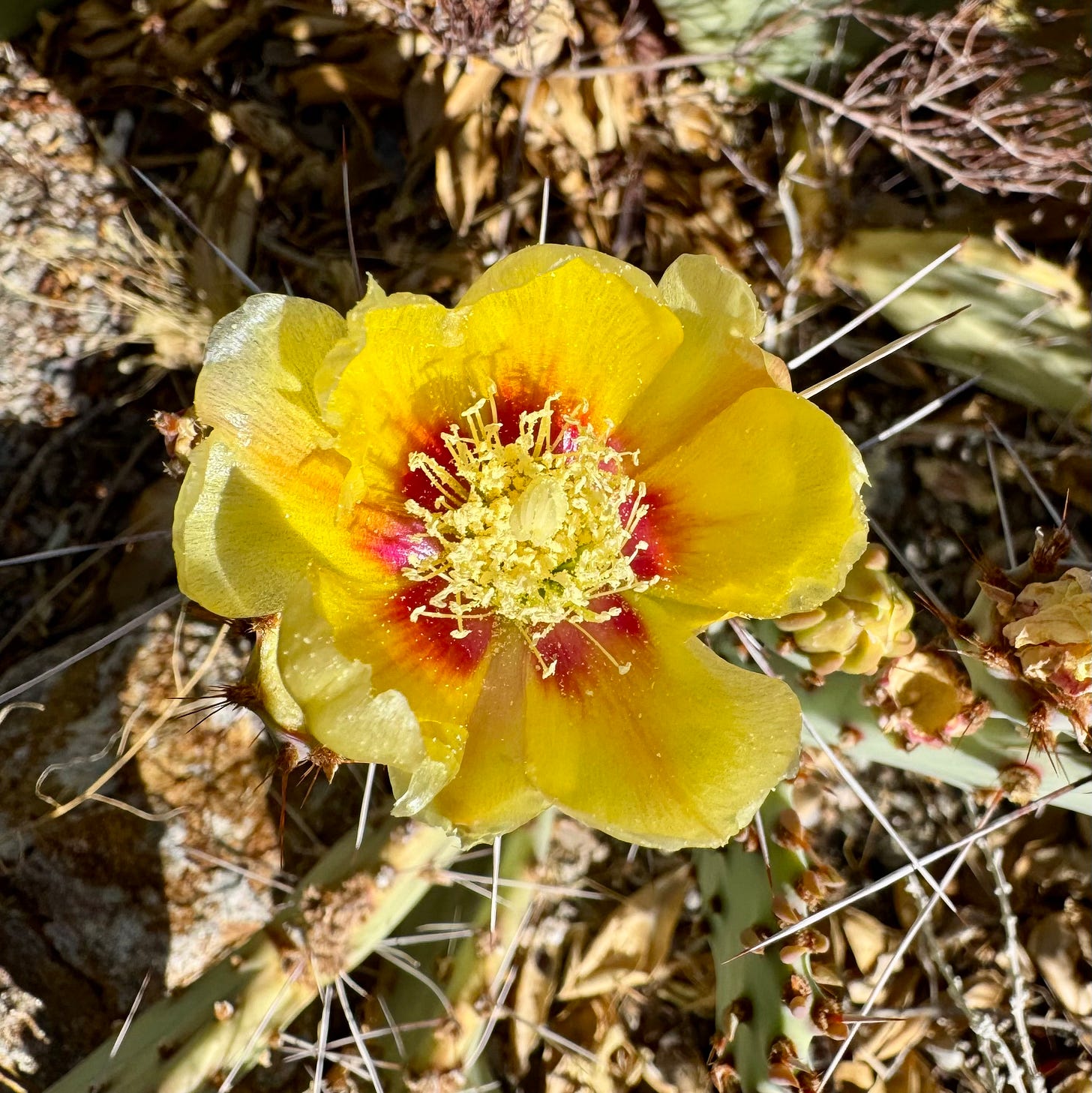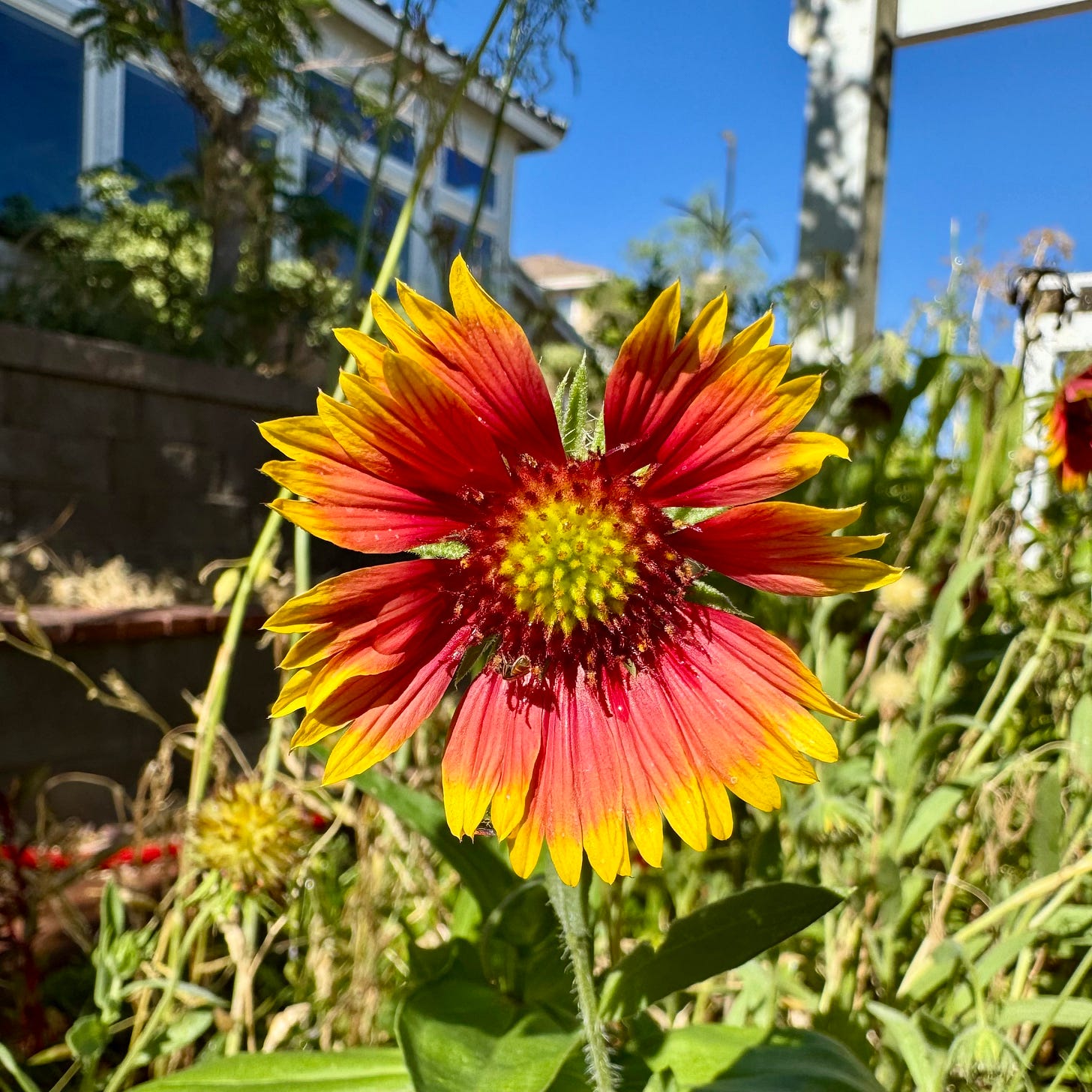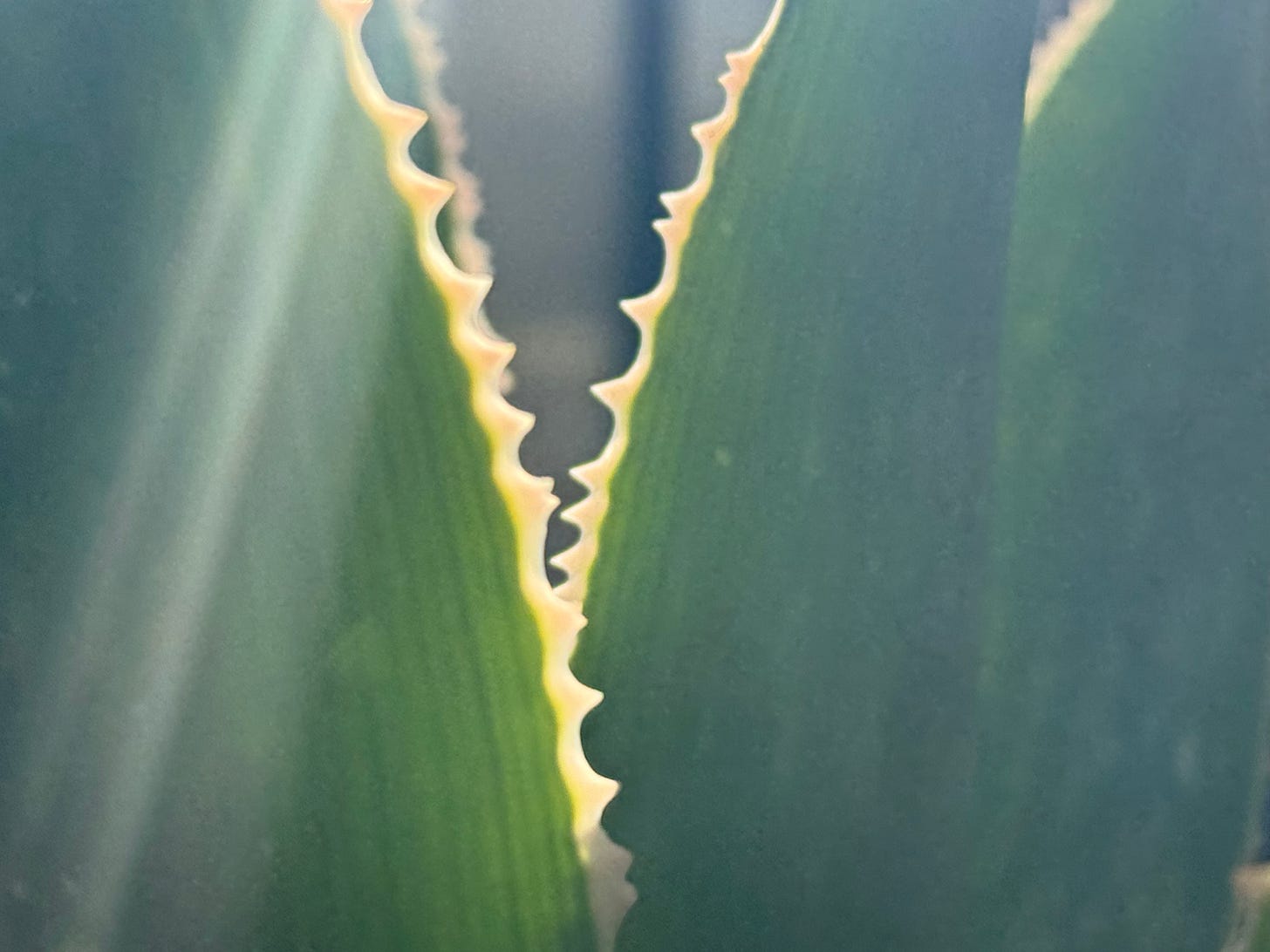Dispatch From a Red Flag Day in Las Vegas
Some ideas for managing the heat, plus a few flowering plants you can grow by seed that aren’t at all bothered
In summer’s heat, the desert is a patchwork of shadow islands. Structural things lose their mass, become as thin as vapor. Their reality is the shade they cast behind.
I chase these shadow isles, tracing the contours of their flattened matter on the hot, dry asphalt like the insomniac chases sleep: when it comes, it is never enough.
This is a red flag warning in the eastern Mojave. Strong winds, high temperatures, and dried-out vegetation are technical terms. What little water is left in the air will vanish, as will the water in leaves not evolved to withstand these conditions. The risk of fire is high; granted, there is not much to burn.
The summer garden is a shadow garden
But in the early morning hours, the shade is long and generous, and the old mesquites and Palo breas are sentinels. They guard the secret paths that skirt the sun.
Even the meager shadows cast by opuntia and creosote, by brittlebush and cholla, create a kind of shadow art. The latter resists the sun’s erasure by transmuting solar radiation into a subtle glow—the green of its photosynthesizing structure becomes a shadow of itself.
Desert gardeners are smart to design around this fact: unlike more temperate climates, where the garden is everywhere growing, the desert garden loses mass in summer. The shadows become the garden.
Summer is for planning
The summer heat in Las Vegas is the gardener’s sole Herculean labor, our punishment for the sin of growing things.
While gardeners north of us use winter to plan their gardens, the desert dweller’s crucible is the searing summer heat. We learn what will endure the sun and survive our meager water budgets, as well as what will thrive with hardly any supplemental water at all.
We learn which precious plants we are willing to baby, and maybe, like I have, we learn that we are not willing to baby any. Instead, we count corpses and decide there must be a better suited plant for this particular spot, something native perhaps, or something from another desert clime: a strange euphorbia, a transplant from the outback, a chihuahuan shrub that has found itself on the wrong side of the Rio Grande, like a character in a McCarthy novel.
In the summer, I walk the garden, count the dead, and make plans for fall. This is the plan, I tell myself. In fall, I collect plants far and wide and put them in the ground. Their first summer, they get regular water. In the second summer, they must be able to survive with supplemental water only every two to four weeks. If they can, they have passed the test. Those who can’t handle it die, to be replaced by something else. I’ll admit when the heat is high and the plants are sad, I sometimes give in. The desert garden is an aspiration.
There are a few exceptions. On the shady, northeastern side of the house, I’ll plant things that need more water. A Texas redbud, for example. Or the native yerba mansa (Anemopsis californica). And in fall, I plant containers with blousy annuals to decorate the winter courtyard.

Adapting to the hot desert garden
The most important variable when choosing a plant for the desert garden is not drought tolerance, but heat tolerance. There are all sorts of techniques to make watering even the most water-hungry plants (think veggies) much more efficient. There are no such tricks for heat tolerance. Though I will suggest a few.
Watering more frequently is not one of them. Instead, a light mist from the end of the garden hose to increase the ambient humidity will help. You should already be giving your desert-adapted plants long, infrequent drinks.
Shade cloths can be draped over vulnerable plants. The cloth must have good ventilation, or you risk creating the conditions for even more intense heat. But in the very least, you are shielding the plant from the worst of the day’s solar radiation. Once you see sun damage, it is often too late, especially for agaves and cactus, which will bear the ugly scars for the remainder of their lives. The trick is to put the cloth out before the sun scorches them—some divination on your part is required.
Unfortunately, a garden covered in shabby burlap for two or three months of the year (and again in the winter for plants that are frost sensitive!) looks less like a garden and more like a laundromat.
Misting and covering are temporary fixes, and what you must do is plant more desert succulents and shrubs, and trees that cast dappled shade, and enjoy the burst of ephemeral flowers in spring and again in late summer and early fall, if we are lucky and the monsoons come.

Summer-flowering plants to grow
The summer garden has its pleasures, too. Not just in form, but in flower. I’ll avoid the regulars here (like lantana and bougainvillea) that only look good because of a steady water diet. Desert marigold (Baileya multiradiata) and blanket flower (Gaillardia sp.) extend their discs of flowers even if their foliage starts to droop. And purple prickly pear (Opuntia macrocentra) continues to bloom sporadically. Asclepias subulata (desert milkweed) is just getting started.
But flowers are, admittedly, rare. Instead, the shade cast by plants is the real desert darling—a kind of reality that is true only now, in this moment of extreme heat, as the sweat from my body disappears just as soon as it appears, a shiny varnish on the angry animal I am as I wander the garden, seeing the wilt here, the spent blossom there, and then the shade, where I rest and consider the birds and other flying things, and the arthropods and other crawling things.
Then, when the sun has reached its zenith, when it has burned away the shadows, that is when death comes to the desert, and I go inside.






Nice that you have a moist place for yerba mansa! And of course I wholeheartedly agree that summer is for planning, and although my style of planning is a bit different, I really like your approach! The shadows don't last nearly long enough this time of year, but I enjoy looking ahead to fall. It keeps me going! Thank you for another wonderful post!